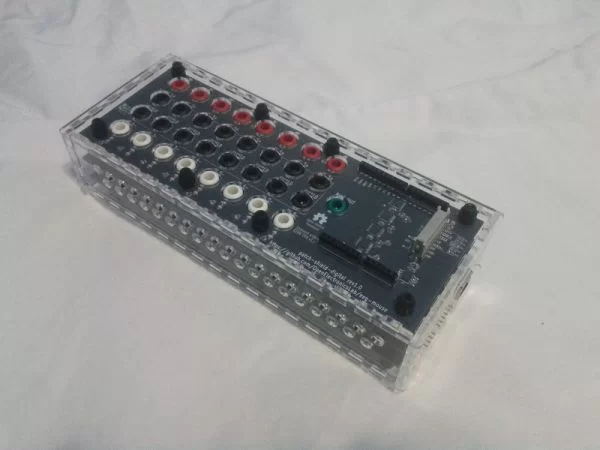The OpenHardwareExG is a platform for ECG, EEG, EMG, ENG, EOG, and evoked potential applications.
The OpenHardwareExG platform was originally developed as part of the eeg-mouse project.
About the OpenHardwareExG project
Project goals
The main goal of the project is to build a device that allows the creation of electrophysiologic signal processing applications. In addition:
- Hardware and software that we develop will have a free/open source license. We also prefer to use hardware and software that are free/open source.
- We would like to keep the hardware
DIY compatible
(hand solderable, with parts that are readily available in small quantities, etc.) - For us, this is a hobby and learning project. It’s important to keep it fun, and take the time to learn along the way.
Current Status as of August 2014
We are able to record ECG signals as a simple demo of the platform:
For this recording, the IN1N electrode was position on the right shoulder, the IN1P electrode on the left shoulder, and the BIAS OUT was on the right hip (lead II of a standard ECG).
The graphing software used is OpenElectronicsLab’s fork of GDAQRec.
We can also record a full 12-lead ECG.
This example was recorded with IN1P-IN8P connected to electrodes at RA, LA, and V1-V6 respectively, IN1N (tied to IN2N-IN8N) connected to LL, and BIAS_OUT connected to RL. We then used this R script to do the appropriate processing and plotting to generate the conventional plot of 12 leads on the standardized grid.
We are also able to record EEG signals:
The big changes in signals are from the eye muscles opening, closing, and blinking. When the eyes are closed, you can see what appears to be an increase in alpha waves, particularly on channels 3 and 4 (positioned over the occipital lobes in this recording).
For this recording, the IN1N electode was positioned at FPz, the BIAS OUT electrode positioned over the spinous process of C5, and the positive electrodes at Fp1, Fp2, O1, O2, F7, F8, T3, and T4 (using the 10-20 system).
For more detail: Open Hardware ExG


